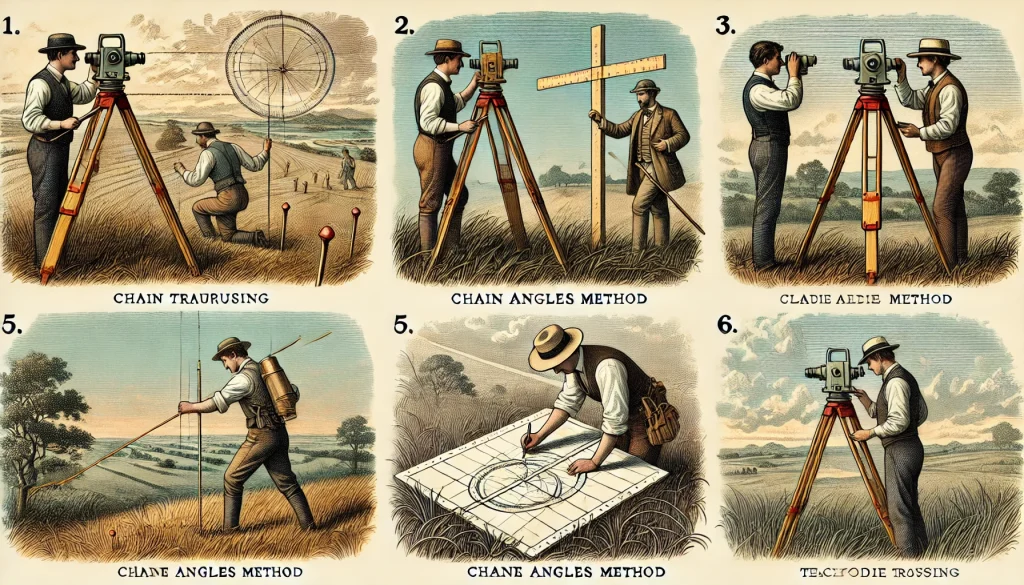Table of Contents
ToggleDegree of Curve
The degree of a curve can be defined in two ways: based on either a fixed arc length or a fixed chord length of the curve
1. Degree of Curve Based on Arc Length
In this definition, the degree of a curve is the central angle subtended by an arc of 30 meters (or 100 feet). This approach is commonly used for railway curves. Essentially, the curve’s degree is determined by the angle formed at the center of the curve by a segment of the arc measuring 30 meters in length.
2. Degree of Curve Based on Chord Length
Alternatively, the degree of a curve can be defined as the central angle subtended by a chord of 30 meters (or 100 feet) in length. This method is typically applied to road curves. The chord is the straight-line distance between two points on the curve, and the central angle subtended by this chord defines the curve’s degree.
Derivation of the Formula
Let’s derive the formula for the arc-based definition:
Let D° represent the angle subtended by a 30-meter arc on a circle with radius R.
Given:
- Total circumference of the circle = 2πR
- Arc length = 30 meters
We can set up the following proportion:
D° / 360° = 30 / (2πR)
Solving for D°:
D° = (360° × 30) / (2πR)
D° = 10800 / (2πR) D° ≈ 1718.9 / R
Thus, we arrive at the formula:
D° = 1718.9 / R
Where: D° is the degree of curve R is the radius of the curve in meters
This formula allows engineers to quickly calculate the degree of curve for a given radius, facilitating efficient design and construction processes in both railway and roadway projects.
Relationship Between the Radius and the Degree of a Curve
The relationship between the radius (R) and degree (D) of a curve is fundamental in both railway and road engineering. This relationship can be derived using two methods:
1. Relationship Based on a Fixed Arc Length
From previous discussions, the formula relating the radius and the degree of a curve for a fixed arc length is given by:
R = 1718.9 / D°
For a 1° curve, the radius:
R = 1718.9 m
This method is particularly useful for long, sweeping curves typical in railway design.
2. Relationship Based on a Fixed Chord Length
Consider a chord PQ of length 30 m, where D° is the angle subtended by the chord at the center O.

From the right triangle OPM (where M is the midpoint of PQ), we can derive:
sin(D°/2) = PM / OP = 15 / R
Solving for R:
R = 15 / sin(D°/2)
For small angles, we can use the approximation: sin(θ) ≈ θ (in radians)
Therefore:
R ≈ 15 / (D°/2 × π/180°)
R= (15 × 360°) / (D° × π)
R= 5400 / (D° × π) ≈ 1718.9 / D°
This result is identical to the arc-based method, demonstrating the consistency between the two approaches.
Note:
- The relationship between R and D is inverse: as the degree of curve increases, the radius decreases, and vice versa.
- Both methods yield the same formula, R ≈ 1718.9 / D°, despite different derivations.
- This formula is crucial for engineers to quickly calculate either the radius or degree of a curve, facilitating efficient design in both railway and roadway projects.
Elements of a Curve:
Back Tangent
The tangent line T1I at the point T1, where the curve begins, is referred to as the “back tangent.”Forward Tangent
The tangent line T2I at the point T2, marking the end of the curve, is known as the “forward tangent.”Point of Intersection
The point I where the back tangent, when extended forward, meets the forward tangent, extended backward, is called the “point of intersection.”Angle of Intersection
The angle formed between the back tangent IT1 and the forward tangent IT2 is known as the “angle of intersection.”Deflection Angle
This is the angle through which the forward tangent deviates from the back tangent. The deflection can occur either to the right or left, depending on the curve’s direction.Point of Commencement
The point T1, where the curve starts from the back tangent, is called the “point of commencement.” It is sometimes also referred to as the “point of curve.”

- Point of Tangency
The point T2, where the curve meets the forward tangent, is called the “point of tangency.” - Deflection Angle to Any Point on the Curve
The angle between the back tangent and the chord connecting the point of commencement T1 to any specific point on the curve is called the “deflection angle” for that point. In Figure above, the deflection angle to point A is IT1A, typically represented by δ. - Tangent Distances
The distances from the point of intersection I to the point of commencement T1, or from the point of intersection I to the point of tangency T2, are referred to as “tangent distances.” - Length of the Curve
This is the total distance along the curve, from the point of commencement T1 to the point of tangency T2. - Long Chord
The straight-line distance, or chord, connecting the point of commencement T1 to the point of tangency T2, is called the “long chord.” - Mid-ordinate
The perpendicular distance from the midpoint of the curve to the long chord is known as the “mid-ordinate.” - Normal Chord
A chord that connects two successive regular points (pegs) on the curve is called a “normal chord.” - Sub-chord
A “sub-chord” is a chord that is shorter than the normal chord. These sub-chords generally occur at the beginning or end of a curve.








